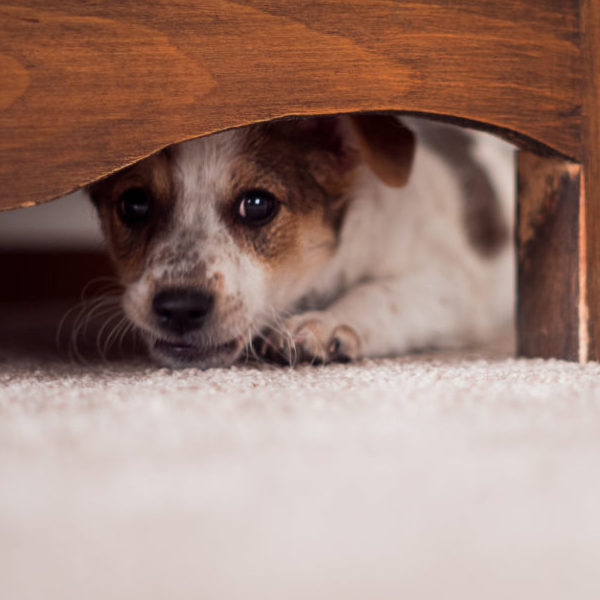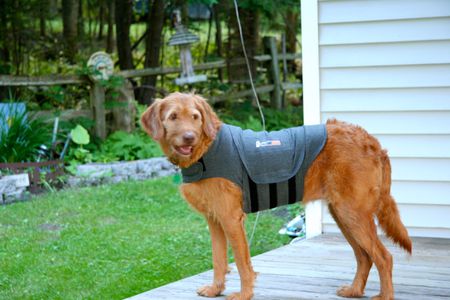
It was one of my darkest days. My beloved Malamute, Nik, was old. She had no patience for the outing on my agenda, preferring the shade of her favorite tree. So, I left her in the yard with plenty of water, snacks, and toys. It was early summer and the day was cool.
By the time I got home, though, she was unresponsive. Heatstroke. I rushed her to the vet, where she spent several hours on an IV and languishing in an ice bath. She recovered. But I could have lost her. And the emergency bill was huge.
“Dogs are not people,” says Paul Brazzell, veterinary consultant, and JustAnswer pet expert. “They function very differently. Heatstroke is at the top of my list of summer pet hazards.”
But his list doesn’t stop there. Animals are sensitive to sound, cannot understand events, and perils the way humans do and depend on us to mitigate the dangers. Whether it’s the heat, the pandemic, or fireworks, it’s best to be prepared for these potential hazards.
Heat
Heatstroke is a danger to both humans and pets. But dogs and cats don’t have the same coping mechanisms humans have can be quickly overcome by heat.
“What do we do when we’re hot?” asks Brazzell. “Sweat. Then a breeze comes along, the sweat evaporates, and he cools down.”
Dogs don’t sweat. They eliminate heat by panting and, to a lesser extent, through their footpads. So when you see a dog panting, she needs help cooling down.
“Shortnose dogs like Pugs, Boston terriers, Shih Tzus, Lhasa Apsos, and Bulldogs are even more prone to heatstroke,” says Brazzell. “I tell clients not to take them outside when it’s hot because they are already having trouble breathing.” Trying to cool down by panting can do serious harm. Puppies, senior dogs, and obese dogs are also at high risk for heatstroke.
Prevention is the best medicine here.
Never leave an animal in the car. The interior of a car can get hot enough to kill a pet in minutes.
The safest place is home in the air conditioning. But your pet probably doesn’t want to shelter at home any more than you do. Still, when it’s hot out, skip long walks and go out in the early morning or evening. If you do take her out in the heat, make sure she has plenty of shade, someplace to swim, and lots of water. These water bottles from Hellovigo’s ($19) let dogs lap water from a bowl that’s attached to a bottle that’s easy to carry.
If you leave her in a shaded yard, install a self-filling watering bowl so she won’t go for long periods without a drink. There are also attachments for the hose – such as this inexpensive one from Lixit ($7.99) — that allows a smart pet to get a drink straight from the spigot.
If you have a dog that’s prone to overheat, invest in this Cooling Mat that gives your dog or cat a cool place to lie down.
You can keep an eye on your dog’s body temperature at all times with a health tracker, such as the Petpace, that constantly monitors vital signs and alerts you if something is wrong.
Hopefully, your prevention measures will keep your pet safe. But if you see signs of heatstroke — excessive panting, not urinating, red gums, drooling, a refusal to get up, shaking, disorientation, vomiting, diarrhea, uncoordinated movement, or collapse – treat it like a medical emergency.
Do everything you can to cool your pet down and call your vet immediately. “A vet will know how to bring that temperature down the right way and to monitor it and make sure everything’s okay,” says Brazzell.
Fireworks and Thunder

“You would be surprised by how many pet owners are stressed out by how stressed out their dog is by fireworks,” says Brazzell. While some pets take it all in stride, others have a serious problem. “It’s unclear why some animals develop phobias,” says Brazzell. “It’s likely a combination of genetics and environmental factors that determines which kind you’ve got.”
If your pet is scared, don’t take it lightly. The best way to handle it is to be prepared.
Whenever possible, don’t take – or leave – your pet outside during a storm or fireworks. Walk her before the event. And make sure the cat is indoors before it starts
“And create a safe space in your house for them to go when they are nervous,” says Brazzell. He recommends outfitting that space with a Feliway diffuser, which creates a calming scent. Put on some relaxing music. And spray some Adaptil, which is a pheromone secreted by the mother dog to calm her puppies. (It also comes in a collar.) Snuggle her, talk to her calmly, and do your best to make her feel safe.
If this isn’t calming her down enough, try a Thundershirt. These are like a constant hug for the dog. “Sometimes they work really well,” says Brazzell. “And sometimes they don’t work at all.” It’s worth a try, though.

There are also some supplements on the market that seem to help with this: Anxitane, Solliquin, and Zylkene are a few.
These phobias tend to get worse and occur more frequently as pets age, though. So your approach to it should always respond to your dog’s current level of anxiety. There are also some dogs who are so terrified by either fireworks or a thunderstorm that there is no holistic remedy available that going to help her cope. In that case, your vet can probably prescribe a medication to help her get through it.
Running Off-Leash
There are a whole host of hazards your pet might encounter – from vehicles to mushrooms – that all start with the failure of one, essential, pet accessory: The leash.
Brazzell considers “Dogs being walked off-leash” (or accidentally running around free) to be the cause of many of the injuries and deaths he sees.
Even if you never walk your dog off-leash, most dogs eventually have at least one, “Why do you hate my freedom?!” moment. Maybe he’s tempted by a running squirrel. Perhaps she can smell the neighbor’s BBQ and hops the fence in search of a hot dog. This might be cute if it wasn’t so dangerous.
The most obvious dangers are getting hit by a car, getting into a fight with another animal, or having a negative interaction with a human.
“But poisoning is very common,” says Brazzell. People put out rat poisons, insecticides, herbicides, fertilizer, and all sorts of poisons. Pets eat them. It ends very badly. Dogs are also prone to ingesting toxic mushrooms they find while out foraging. When a pet ingests a toxin, it’s very difficult to treat it, especially if you don’t know what it was. The treatments for different poisons are radically different and, in most cases, need to start immediately.
If your dog escapes, goes missing, having her microchipped by the vet will bring her back to you in an emergency. But putting a collar on her with GPS tracking might prevent that emergency.
The Whistle Go tracker ($129) plus subscription) sends real-time location alerts to your phone when your dog leaves a designated area, like your back yard. And if she’s on a walkabout, the built-in GPS tracker will help you locate her fast. It will also keep an eye on her activity and alert you if anything seems off.

The FitBark ($99.95 plus subscription) will track your pet with a GPS, too. It’s also a step tracker that gathers health data based on how active your pet is and turns it into actionable information you can use to understand her health and needs. You can connect it to your FitBit and track your workouts together.
Insect and snake bites are another hazard off-leash dogs encounter. These bites are common injuries in pets. If your dog is running around off-leash, you won’t know the cause of that swollen paw or face, which can make treating it challenging.
The Pandemic
Everyone is worried about the pandemic right now. But there is, so far, based on what the CDC and World Health Organization, have found “no evidence that animals play a significant role in spreading the virus.”
“But until we know more,” says Brazzell, it can’t hurt to be a bit more standoffish with your pet if you are sick or have been exposed.” And when it comes to letting other people – who might be carriers – pet your dog? “It’s generally not a good idea to pet a strange dog anyway,” he says. “And parents shouldn’t let their kids pet a strange dog.”
When it comes to transmitting human ailments to your pet, though, Brazzell would like to point a real and present danger: Prescription medications. Lock them up! He has seen it so often it’s upsetting. The dog gets into the anti-anxiety medications, the anti-depressants, or the pain killers. They are often quite toxic to pets. And when a dog downs an entire bottle of something? That can be at a dosage that will kill them quickly – or at least cost you a fortune at the emergency pet hospital.
